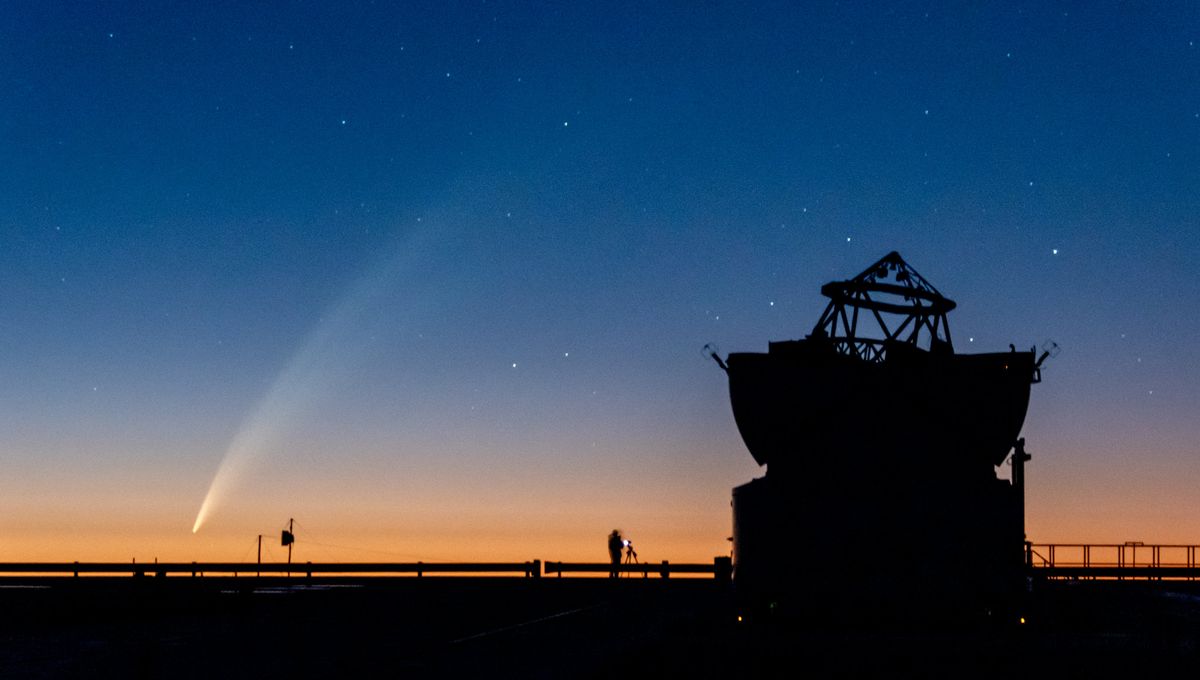
Comet C/2024 G3 (ATLAS) did it! It survived its perilous perihelion, getting ten times closer to the Sun than Earth does. This comet is a sungrazer comet, and the encounter made it bright – so bright that even at a considerable distance, it is visible from Earth. But it is possible that the doom was just deferred not avoided, recent observations suggest that it is all falling apart.
ADVERTISEMENT GO AD FREE
As reported by Sky & Telescope, Hungarian astrophotographer Lionel Majzik snapped images of the comet from Chile over the last several days, and it is clear that something is going on. While the comet’s tail is getting brighter and larger, the coma seems to have disappeared, suggesting something is afoot in the nucleus.
Comets are simplistically made of three components: The nucleus, the coma, and the tail (although there can be two tails). Comets are mostly made of ice, so when they go near the Sun, their nucleus sublimes – goes directly from solid to gas – forming the coma, the fuzzy bright part we recognize as the head of a comet.
The Sun does not only emit light: it also electrically charged particles, the solar wind, and this creates and shapes the tails. Tails can be made of dust and gas – the primary tail, often curved – or formed by the glowing ionized gas, a straight one called the ion tail.
Often, star-grazing comets such as C/2024 G3 do not survive the encounter with the Sun, though astronomers believe that this one did so in the past. This comet’s period is 135,000 years – long for a human, but quite short in cosmic terms. It likely passed by the Sun several times in the past, but this time might have been the final one.
ADVERTISEMENT GO AD FREE
While the comet’s future is uncertain, it is still possible to see it. In the Northern Hemisphere, it is visible just after sunset, but it will be very low on the southwestern horizon. In the Southern Hemisphere, it will be much higher from the horizon, closer to the West. A pair of binoculars and a clear westerly view will increase your chances of seeing it.
[h/t: Sky&Telescope]
Source Link: Visible Comet C/2024 G3 (ATLAS) Might Be Falling Apart